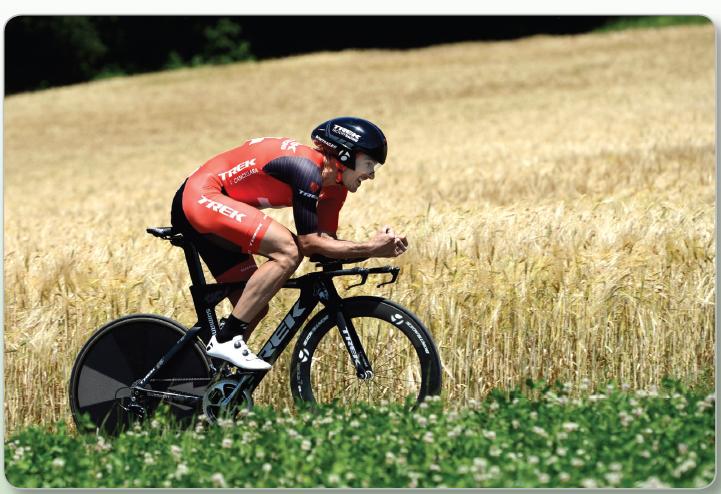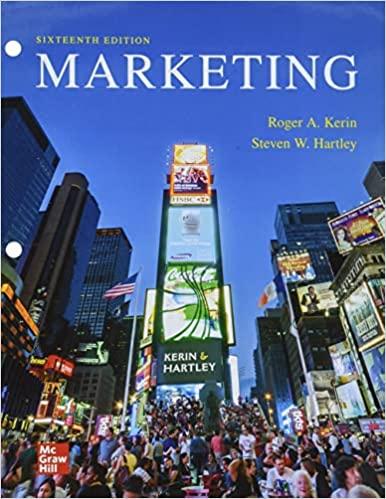Let me tell you a little bit about the history of Trek, says Mark Joslyn, vice president
Question:
“Let me tell you a little bit about the history of Trek,”
says Mark Joslyn, vice president of human resources at Trek Bicycle Corporation. “It’s a fantastic story,” he continues proudly. “It’s a story about a business that started in response to a market opportunity. "That opportunity was to build bicycles with the highest-quality frames. In fact, Trek’s mission was simple: “Build the best bikes in the world.” To do this Trek needed to find the best raw materials from the best vendors. Michael Leighton, a Trek product manager, explains, “Our relationship with our vendors is incredibly important, and one of our recipes for success! "THE COMPANY Trek Bicycle was founded in 1976 by Richard Burke and Bevill Hogg. With just five employees they began manufacturing bicycles in a Wisconsin barn. From the beginning they targeted the high-quality, prestige segment of the bicycle market, using only the best materials and components for their bicycles. The first year they manufactured 900 custom-made bicycles which sold quickly.
Soon, Trek exceeded its manufacturing capacity. It built a new 26,000-square-foot factory and corporate headquarters to help meet growing demand. Trek’s focus on quality meant that it was very sensitive to the materials used to manufacture the bicycles.
The first models, for example, used hand-brazed steel for the frames. Then, borrowing ideas from the aerospace industry, Trek soon began making frames out of bonded aluminum. Following on the success of its aluminum bicycles, Trek began manufacturing bicycles out of carbon fiber. The idea was to be “at the front of technology,” explains Joslyn.
The company also expanded its product line. Its first bikes were designed to compete directly with Japanese and Italian bicycles and included road racing models. In 1983 Trek manufactured its first mountain bike. In 1990 Trek developed a new category of bicycle—called a multitrack—that combined the speed of road bikes with the ruggedness of mountain bikes. The company also began manufacturing children’s bikes, tandem bikes, BMX bikes, and models used by police departments and the U.S. Secret Service. In addition, it added a line of cycling apparel called Trek Wear and cycling accessories such as helmets. Trek also undertook an Eco Design initiative to build bicycles and parts that are “green”
in terms of the environmental impact of manufacturing them, how long they last, and how they can be recycled. To accommodate these production demands, Trek expanded its facilities two more times.
As Trek’s popularity increased, it began to expand outside the United States. For example, the company acquired a Swiss bicycle company called Villiger and the oldest bicycle company in Germany, Diamant. It also expanded into China, opening two stores and signing deals with 20 Chinese distributors.
Trek remains one of the leading manufacturers of bicycles and cycling products, with more than $800 million in sales and 2,000 employees. Trek’s products are now marketed through 1,700 dealers in North America and wholly owned subsidiaries in seven countries and through distributors in 90 other countries. Its brands include Trek, Gary Fisher, and Bontrager. As a global company, Trek’s mission has evolved also, and today the mission is to “help the world use the bicycle as a simple solution to complex problems.” Trek employees believe that the bicycle is the most efficient form of human transportation and that it can combat climate change, ease urban congestion, and build human fitness. Their motto: “We believe in bikes.” Mark Joslyn explains: In the world today we are faced with a number of challenges. We are faced with congestion, issues with mobility, issues with the environment, and quite frankly, issues with health. We believe that the bicycle is a simple solution to all of those things. We are clearly an alternative to other forms of transportation and that’s evident in the way that people are embracing cycling not just for recreation but also for transportation. And more and more, particularly in the United States, we are seeing people move to the bike as a way to get around and get to the places they need to ultimately get their life done.
ORGANIZATIONAL BUYING AT TREK Trek’s success at accomplishing its mission is the result of many important business practices, including its organizational buying process. The process begins when managers specify types of materials such as carbon fiber, component parts such as wheels and shifters, and finishing materials such as paint and decals needed to produce a Trek product. In addition, they specify quality requirements, sizing standards, and likely delivery schedules. According to Leighton, once the requirements are known, the next step is to “go to our buying center and say ‘can you help us find this piece?’”
The buying center is the group of individuals who are responsible for finding the best suppliers and vendors for the organization’s purchases. At Trek the buying center consists of a purchasing manager, buyers who

identify domestic and international sources of materials and components, and representatives from research and development, production, and quality control. The communication between the product managers and the buying center is important. “I work very closely with our buying centers to ensure that we’re partnering with vendors who can supply reliable quality, and they are actually the ones who, with our quality control team, go in and say, ‘yes this vendor is building product to the quality that meets Trek’s standards,’ and they also negotiate the pricing. Our buying center domestically is a relatively small team of people, and they are focused on specific components........”
Questions
1. What is the role of the buying center at Trek? Who is likely to comprise the buying center in the decision to select a new supplier at Trek?
2. What selection criteria does Trek utilize when it selects a new supplier or evaluates an existing supplier?
3. How has Trek’s interest in the environmental impact of its business influenced its organizational buying process?
4. Provide an example of each of the three buying situations—straight rebuy, modified rebuy, and new buy—at Trek.
Step by Step Answer:






